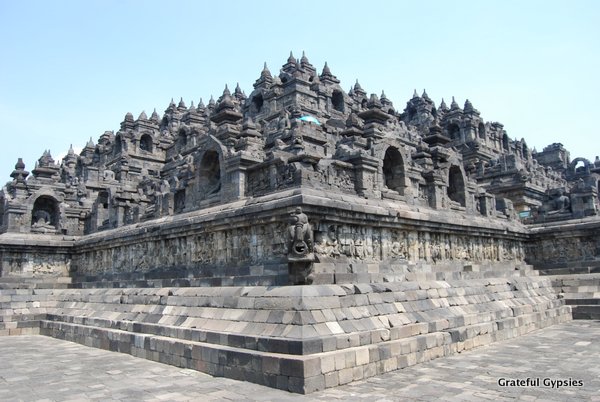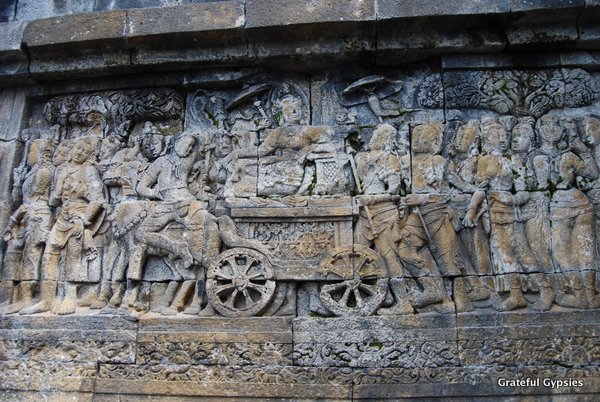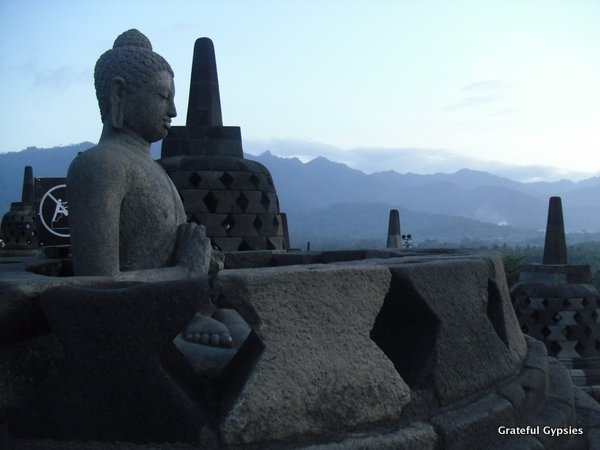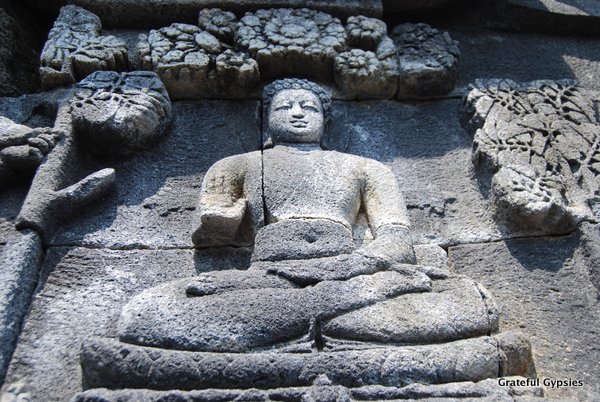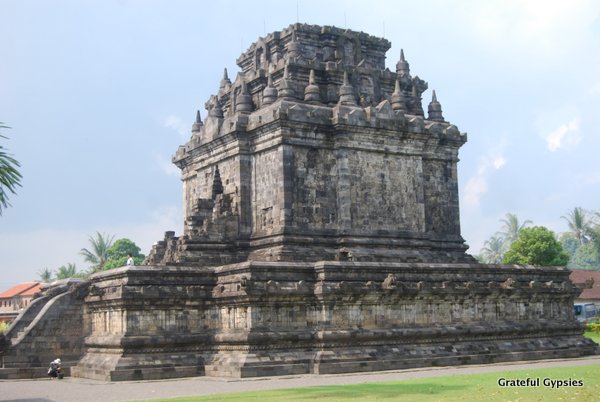A Guide to Borobudur Posted by sasha on Apr 7, 2015 in Uncategorized
Located in Central Java, Borobudur is the largest Buddhist temple in the world. It remains an important pilgrimage site and is one of the most popular places to visit in all of Indonesia. Here’s a rough guide to this incredible temple to give you some background info before you visit:
History
Built in the 8th and 9th centuries during the Syailendra Dynasty, this impressive monument was constructed by workers who hauled two million stones from local rivers and streams. It remained an important religious site until it was abandoned in the 14th century when Java converted to Islam. Fast forward a few centuries to the early 1800s, and Sir Thomas Stamford Raffles – then the British governor of Java – learned of Borobudur from locals and took an interest in having it excavated. Unfortunately, during this process the temple was exposed to the elements, and many villagers also helped themselves to stones and statues. When it seemed like all hope was lost, an ambitious program called “Save Borobudur” was launched in 1968 by the Indonesian government in conjunction with UNESCO. After many years of hard work, the temple was restored and designated a World Heritage Site.
Design
Borobudur was designed in a Javanese Buddhist style, combining elements of traditional Indonesian ancestor worship and the Buddhist concept of attaining Nirvana. The main temple is built in three tiers – a pyramidal base with five square terraces, three circular platforms, and a monumental stupa at the top. This design is based on the Buddhist representation of the universe as being divided into three spheres:
- Kamadhatu (the sphere of desires): The base of the temple.
- Rupadhatu (the sphere of forms): The five square terraces.
- Arupadhatu (the sphere of formlessness): The three circular platforms and the stupa.
When viewed from above, the entire temple resembles the mandala, a sacred symbol in both Buddhism and Hinduism representing the universe.
Around the base, there are thousands of narrative reliefs sculpted in the walls and the balustrades. Illustrating the life of Buddha and the soul’s progression towards redemption, these are the largest and most complete collection of Buddhist reliefs in the world.
Originally, there were over 500 Buddha statues placed around the main temple. Of those, about 300 have been damaged – many of them are headless – and around 40 are missing. On the circular terraces there are 72 stupas, each containing a statue of Buddha.
Pilgrimage
Although a majority of Indonesians are now Muslim, Borobudur remains an important pilgrimage site for Buddhists. On Vesak (Buddha’s Birthday), the temple is full of worshippers making the annual pilgrimage. They will circumambulate around the galleries and terraces, always turning to the left while either chanting or meditating. Following the path around the base, the square and circular terraces, and finally arriving at the main stupa, they are guided on a spiritual journey to enlightenment.
Borobudur during Vesak.
The Other Temples
There are actually three temples that make up the complex – Borobudur, Pawon, and Mendut. As they are positioned in a straight line, it is believed there was a symbolic meaning connecting them all. During the Vesak ritual, followers will begin at Mendut, walk by Pawon, and end at the main temple. Although these are not nearly as impressive as Borobudur, it’s still worth it to visit both Mendut and Pawon to get the full experience.
We’ll have more on Borobudur in the weeks to come, including a travel story and a few videos. For now, you can check out this video from UNESCO introducing this incredible temple:

Build vocabulary, practice pronunciation, and more with Transparent Language Online. Available anytime, anywhere, on any device.
About the Author: sasha
Sasha is an English teacher, writer, photographer, and videographer from the great state of Michigan. Upon graduating from Michigan State University, he moved to China and spent 5+ years living, working, studying, and traveling there. He also studied Indonesian Language & Culture in Bali for a year. He and his wife run the travel blog Grateful Gypsies, and they're currently trying the digital nomad lifestyle across Latin America.



